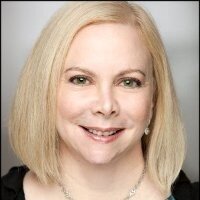Eruvin 24
“This is not a human being; rather, he is an angel, as he is capable of resolving a problem that I struggle with.”
Today’s Talmud city tour takes us into a karpef, which is an outdoor area that is used for non-residential purposes such as storage. I envision a courtyard cut in the middle of an alleyway that is piled with discarded objects such as bicycles that are bereft of their wheels, a rain stained sofa, a steel file cabinet and some random plantings. I used to know of such a space where the East Village meets the Lower East Side and before the area was so heavily gentrified. It was a community garden that was enclosed by graffiti-covered brick walls on three sides, had an open archway on its open side, and contained an assortment of plantings and castoff junk.
The karpef under discussion today has a garden that fills about half of its space and in my imagination is over-run with weeds. The planted garden plays an important role is determining what may be carried on Shabbat in this space. Rabbi Shimon says this karpef along with roofs and courtyards can be considered one domain for the purpose of carrying utensils that were found scattered within their respective space on Shabbat. He tells us what we know already: since these are not spaces that are attractive for spending much time in, it is permissible to carry objects within them from place to place. And I can attest that you really would not want to sit on the soiled seating in the East Village garden unless you were willing to bring uninvited critters home with you.
The matter is quite different if you bring utensils from your home into the karpef garden. In this case, it is allowable to carry within the domain if according to Rav Huna, the planted part of the karpef consumes only a minority of its space. The Rav quantifies this by saying that carrying is allowed if the planted section is less than two beit se’a (one beit se’a equals 576 meters).
Instead of vegetable plantings, if this karpef contains trees planted in rows, it is considered a courtyard and is permissible for carrying about. Such an arrangement of trees transforms the public space into one suitable for dwelling, while another arrangement would label the space an orchard, where it would be prohibited to carry objects on Shabbat. Of course, when there is another Rabbi there is another opinion, and Rav Nahman allows any arrangement of trees to qualify as a courtyard.
In an ingenious method for transforming a space and keeping oneself busy, Rav Nahman who has creative tendencies, says that if a karpef is greater than the stipulated two beit se’a, one can make a hole larger than ten cubits in the fence or wall that surrounds it, and then close the opening off so that it does not create a breach greater than ten cubits. This allows for the space to be reimagined into one that is suitable for a residence. Holes can be made in the wall and then fenced off over and over again in an incremental effort, until they are greater than ten cubits. It is a process that transforms a physical space that might be a bit dodgy like the East Village garden into one that at least symbolically represents a space fit for a dwelling (although drilling a hole in the wall and filling it up and drilling and filling it again and again would still not have convinced me to sit down in that garden.)
The world has changed since the onset of COVID-19 earlier this year and it will require a reimagining of public spaces. I can no longer imagine standing in the middle of Grand Central Station with the commuting crowds flowing past me, or seated in the atrium of a bustling mid-town office building drinking coffee or sitting shoulder-to-shoulder in a crowded Russian restaurant eating blinis (which was the last one I visited in early March before the lock-down.)
How do we reimagine public spaces in densely populated cities in this new reality where we must all stay six feet apart until there is a vaccine available, or perhaps forever? Subways, elevators, classrooms, intimate restaurants, theaters, concert halls, social events, bars, gyms, street fairs no longer make sense when there is a raging pandemic among us. We need to look to the urban planners, who may be the angels among us, to help us reimagine our public spaces.
